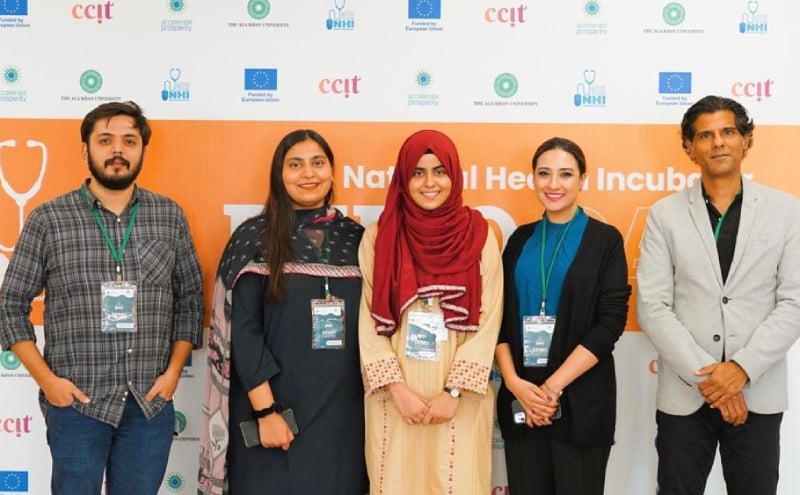
Human Centered Design Thinking in the Emergency Department: Channeling the Chaos Together
Nida Saeed, Mahreen Sulaiman, Asad Mian
One of the most intriguing metaphors describing the Emergency Department (ED) that we came across in our journey to better understand its business model and intricacies, was while conversing with the Business Manager of the Aga Khan University Hospital’s (AKUH) ED. He said that the ED acts as the figurative “heart” that pumps “blood” towards all other hospital departments; in other words, a recruitment base for patients that arrive and are to be admitted to the hospital. This was perhaps the point it became glaringly obvious to us, the importance the ED held for the whole hospital as a system.
Globally, the demand for emergency medical services continues to rise in almost all high-income and low-income countries, including those with universal coverage and a strong primary care network. With limited resources in terms of human resource and forces of high demand, there are bound to be problems arising even in the most well-equipped EDs.
As part of our Health Innovation Fellowship1 at the Critical Creative Innovative Thinking (CCIT) forum2, the co-innovation and incubation hub at AKUH in Karachi, Pakistan, my team and I rotated in the ED of AKUH to identify and solve problems by applying Human Centered Design Thinking (HCDT) – one of the cornerstones of our fellowship – a 5-step creative and innovative problem-solving process that keeps an empathetic or people-based approach at its heart.3
An HCDT approach increases the chances that a solution is one that a group wants to deliver and receive by understanding perspectives and context, identifying a priority challenge, brainstorming viable solutions to that challenge, prototyping the best ideas, and testing them out.4
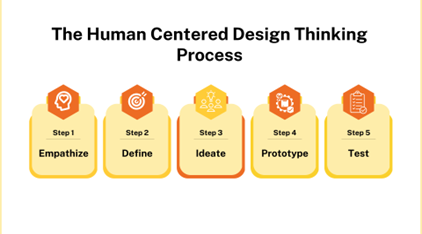
Figure 1: The Human Centered Design Thinking Process is a stepwise approach as shown here, albeit in reality it may not always be that linear.
Our journey of HCDT in the low-resourced ED, began with the observation of the chaotic beast or a well-oiled machine - depending on the onlooker’s perspective- that is the ED. We shadowed the healthcare providers, observing their routes, as well as incoming patients; tracking their patient journeys. The reason why observation is the first step in the HCDT process is clear, as it helps to understand the ‘victim’ journey without any pre-formed biases. We then conducted interviews from the on-ground healthcare providers to understand their problems, emotions and experiences. The questions were kept generic and open-ended, to probe in depth and establish a good knowledge of the ED, its complexities and to obtain high-quality responses.
There were several themes or problem areas that came to light with this exercise; slow systems leading to slow decision times, limited bed capacity to cater to patients, lack of privacy for patients during extended triage to name a few, however, there was one repeating theme that we decided to single out and work on. It led us to develop our problem statement; “Knowledge gaps of disease and treatment priorities lead to patient dissatisfaction and ultimately healthcare worker burnout in the ED of the Aga Khan University Hospital”. The problem was multidimensional, on one hand healthcare providers were giving their all, working long hours in the ED, physically and mentally burnt out by the stress of this fast-paced environment. On the other hand, there were incoming complaints from patients and attendants who felt they were not being given adequate attention during and in between the care process.
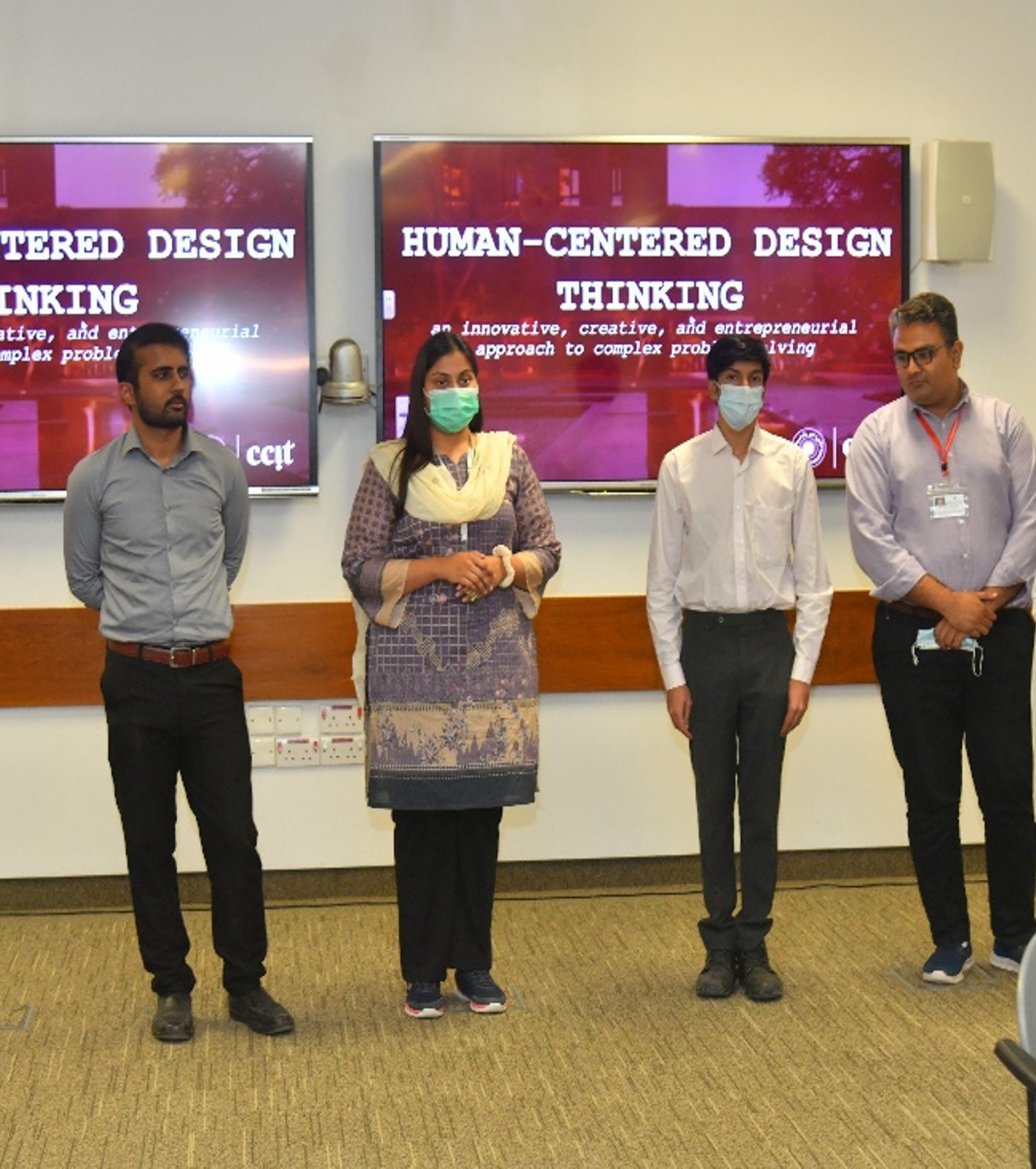
Human Centered design Thinking (HCDT) workshop being conducted by team CCIT for the Department of Emergency Medicine at AKU.
A clearly defined problem statement allowed us to move towards structured brainstorming or ideation, which starts with divergent thinking. This is a process that welcomes all ideas that might or might not be realistically and practically possible, to encourage creative thinking. Through multiple brainstorming sessions, ideas were generated to address the list of needs and challenges of the ED’s end users and stakeholders. These were then put through the convergent thinking process, to find the one best fit.
After careful consideration, we proposed that a volunteership program should be introduced at the AKUH ED. The goal of this program would be to provide support to on-ground healthcare staff in counseling and dealing with the massive patient influx at the ED, which directly affects their burnout. This program is to target customer satisfaction and provide knowledge to patients and attendants. This idea was chosen amongst others in the divergent ideation phase, due to the following reasons:
- The solution is low tech and can support patients/attendants from a wide variety of backgrounds whether they be tech-savvy or not.
- The solution is relatively cost-effective.
- Evidence that this type of program has a positive effect on the patient journey can be observed through a study conducted in 2019 at the Presbyterian Hospital in New York. Here, the effectiveness of volunteers acting as patient greeters and general waiting room staff on patient experience and satisfaction was tested in a pediatric outpatient clinical setting. Feedback from caregivers showed that there was a significantly higher perceived quality of care as well as a decrease in waiting room anxiety with the introduction of volunteers5. Another unexpected benefit also arose in volunteers acting as messengers between caregivers and back end staff when the wait time became too long, which showed that their contribution also improved communication in the department.
To begin with, we proposed that our program be introduced in the pediatric section of the ED as a pilot program, and to move ahead with a phased approach incorporating it into further sections of the ED. A pilot protocol has been created at this stage that states the volunteers will need to have the mandatory pre-med educational background and will be trained in other related courses as per the department’s requirements amongst other criteria and responsibility. To measure the success of the pilot, metrics like healthcare worker burnout and patient satisfaction and complaints will be recorded before and after implementation. Also, questions specific to the volunteers will be added to the patient survey questionnaire asking them if they contacted the volunteer, how they would rate them and if they were helpful. Once the pilot is implemented, and data is gathered, the results will guide us to our future steps.
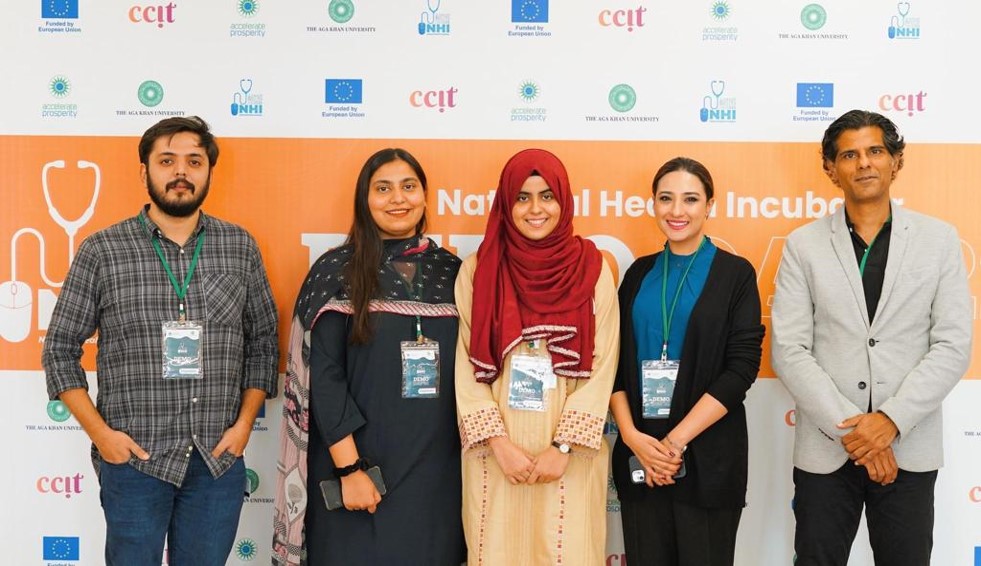
The Critical Creative Innovative Thinking (CCIT) forum at the Aga Khan University (AKU), Karachi, Pakistan. CCIT is a co-innovation and incubation hub at AKU.
The ED of any hospital is a critical space, where healthcare providers do their utmost to provide the best possible care quickly for their acutely sick patients. Limited resources whether in terms of capital, or human resource means that there will be challenges on multiple levels. Innovative approaches like HCDT may be the key to addressing the right problems and proposing the best fit solutions in the available capacity.
References:
- What We Do
- Critical Creative Innovative Thinking
- An Introduction to Design Thinking Process Guide
- Mian AI. (2021). #C2i-Create-2-Innovate: Expansion From The Merely Technical To The Metaphorical. In AI Mian (Ed.) MEDJACK: The Extraordinary Journey of an Ordinary Hack. (pp. 138-155). SEED Pvt Ltd. Kindle Edition.
- Servati T, Pethe K, Tiase V. Does the use of volunteers and playbooks in pediatric primary care clinic waiting rooms influence patient experience? Patient Experience Journal. 2019; 6(1):127- 133. Doi: 10.35680/2372-0247.1329.)
About the Authors: Nida Saeed was a CCIT innovation fellow in 2022. Dr. Mahreen Sulaiman is the Co-Director of CCIT. Asad Mian MD, PhD is a Professor, and Director of CCIT, in addition to chairing the Department of Emergency Medicine at AKU-K.
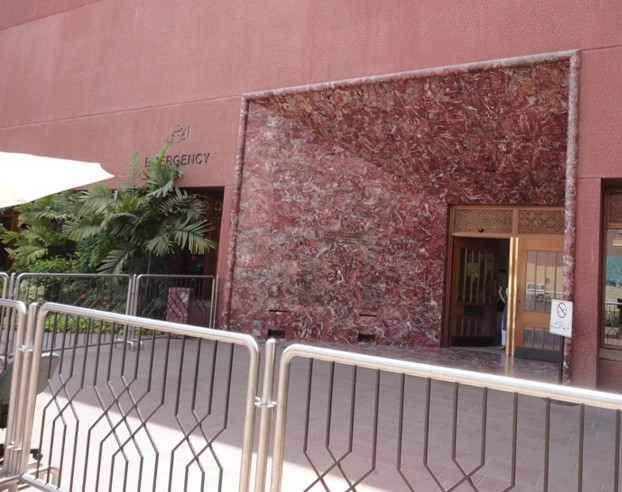
Entrance to the Emergency Department Aga Khan University Hospital Karachi, Pakistan
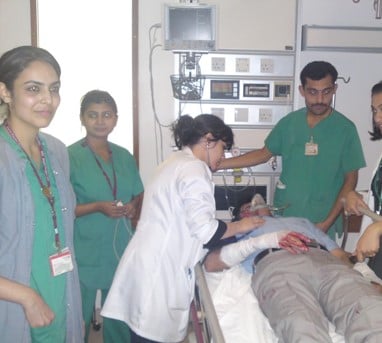
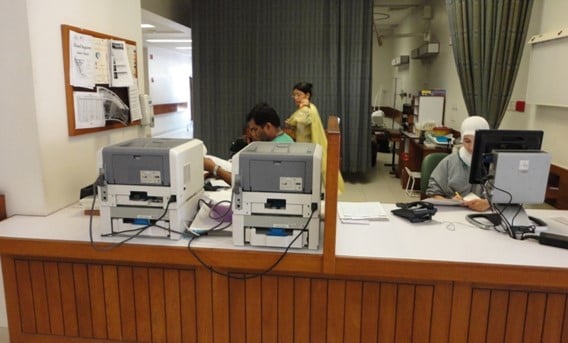
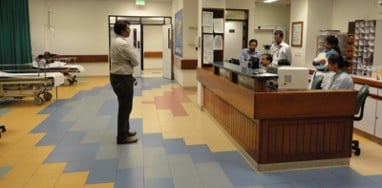
A few areas of the Emergency Department at the Aga Khan University Hospital, Karachi, Pakistan.



